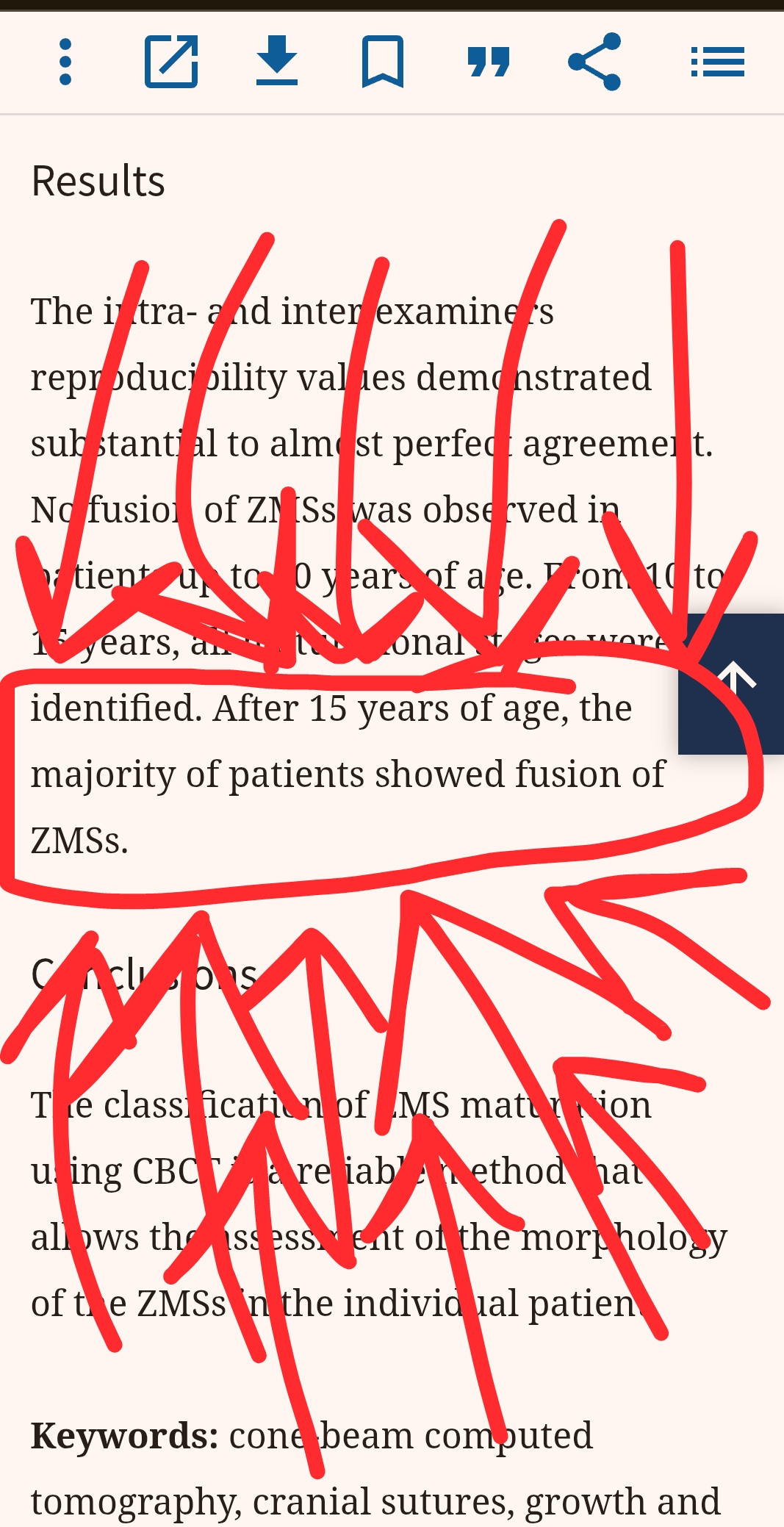Fishy
Iron
- Joined
- Nov 21, 2023
- Posts
- 163
- Reputation
- 165
“The zygomaticomaxillary suture is the longest and thickest maxillary suture (ZM in Figure 1, Table 1) (51). It is completely patent on CT until age 10-15 and remains incompletely interdigitated through the 7th decade in cadavers (19,52,53)“

Picture 1. The Zygomaticomaxillary sutures
- "It is completely patent on CT until age 10-15":This means that the suture is fully open or clearly visible on a CT scan until the person reaches the age of 10 to 15 years. "Patent" here means open or unobstructed.
- "and remains incompletely interdigitated through the 7th decade in cadavers": After the age of 10-15, the suture does not fully close or fuse but instead stays partially interlocked or interdigitated (where the edges are interwoven but not fully fused) up until the person is in their 70s, as observed in cadavers.
And since movement is possible when the sutures aren’t fully closed, forward growth and enhancing the Lefort II region should be possible at any age.
Lifefuel for people lacking forward growth or facial depth

Picture 1. The Zygomaticomaxillary sutures
- "It is completely patent on CT until age 10-15":This means that the suture is fully open or clearly visible on a CT scan until the person reaches the age of 10 to 15 years. "Patent" here means open or unobstructed.
- "and remains incompletely interdigitated through the 7th decade in cadavers": After the age of 10-15, the suture does not fully close or fuse but instead stays partially interlocked or interdigitated (where the edges are interwoven but not fully fused) up until the person is in their 70s, as observed in cadavers.
And since movement is possible when the sutures aren’t fully closed, forward growth and enhancing the Lefort II region should be possible at any age.
Lifefuel for people lacking forward growth or facial depth



 it's not the same
it's not the same

